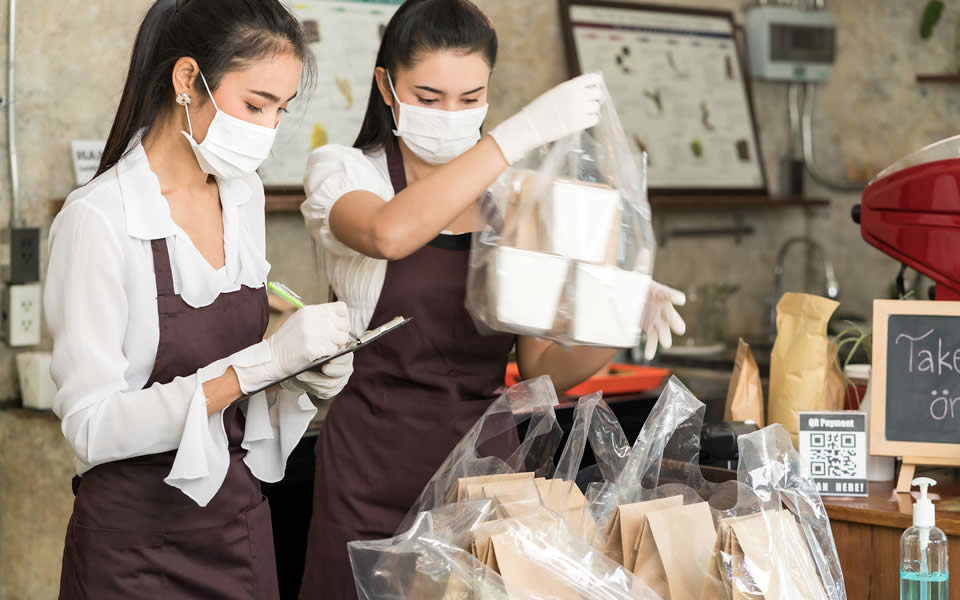Tips for Improving Curbside Takeout During COVID-19
By Joshua Bloom, Manager, Assurance Services
If you own or manage a restaurant, you already know the pain of COVID-19. The response of health regulators has been inconsistent, with different rules imposed by different states, cities, and towns. With the number of positive cases of COVID-19 increasing across the country, a potential vaccine remaining months away, and recent data suggesting that COVID-19 spreads through the air, with indoors being highest risk, it may make sense to revisit your curbside and/or takeout program to maximize your income opportunities, while minimizing your risk as much as possible.
Optimize Your Menu
Logan’s Roadhouse, a chain of restaurants based in Nashville, Tennessee, recently went through the exercise of reviewing its menu and trimming the number of items by 20%. In an article posted by Nation’s Restaurant News, Marc Buehler, CEO of SPB Hospitality, which owns Logan’s Roadhouse, said, “The pandemic gave us a chance to trim our menus and really find the things that people want to eat and buy.” Other restaurants are doing the same, including Taco Bell, McDonald’s, Chili’s, and others. Independent restaurants are also focusing on re-engineering their menus to be shorter. Optimizing your menu options potentially allows you to reduce the number of ingredients you need to maintain in inventory, reduce food waste, and ultimately streamline kitchen operations. If your menu is complex, consider that, in the current environment, “less is more.” Review your menu to determine which items are your best sellers and which ones have the greatest margins. If an item is not popular and/or is below average in margins, consider striking it.
At the same time, go for the upsells on higher margin products, such as appetizers, desserts, or even alcoholic beverages as permitted by state and local law.
Packaging
Plating a meal for immediate consumption in a restaurant setting is vastly different than packaging a meal to go.
If a customer orders a dinner, say a cheeseburger, and the restaurant simply puts it in a box, the customer may find a soggy bun, tired toppers, a cold burger, and soft, limp, depressing fries. No customer is going to want to pay for this experience again.
In your dining room, you spend a lot of time looking at how to plate meals for the most appealing service to the customers. You should be putting the same amount of thought into your takeout packaging.
When possible, ditch Styrofoam. It retains heat and doesn’t breathe, which ultimately turns your food into a soggy mess, not to mention its negative environmental impacts. Consider using either paper or cardboard, which allows the food to breathe and is more eco-friendly.
If you must wrap food, wrap it loosely. You want the moisture and steam to escape so the meal can breathe and stand up to being transported. You can also consider using corrugated paper at the bottom to help absorb excess oil and prevent sogginess.
For fried food, use vented packaging to preserve crispness. Use paper bags that have reinforced bottoms or an extra piece of cardboard at the bottom to prevent ripping, keep containers from spilling, and stop drips from soaking through.
Consider separating items with different temperatures. If a customer orders cold sushi and a hot teriyaki dish, and you pack them in the same bag, both dishes will end up lukewarm. By keeping food with different temperatures in separate bags, you can have more control over the quality of the final delivered product.
Take your takeout out for a test. Drive around awhile, and then take a look at how your takeout held up. Is it visually acceptable? Does it taste as good as the plated version? You may decide to scuttle plans to sell poorly performing items via takeout, if they cannot hold up to your quality standard.
If you’re putting anything in a bag for delivery, whether by your own driver or through a third party, make sure you seal the bag with a tamper-proof sticker or tape. Your customer wants to know with certainly that nobody else touched their order, especially during a pandemic.
Establish Your Takeout System
Treat takeout as a system that is just as important as on-site dining was prior to COVID-19. You want to make it as easy as possible for customers to get their food as quickly as possible, with as few steps as little as possible.
- Set up online ordering. This will free up personnel for other tasks.
- Go cashless. Processing credit cards is much faster than handling cash, with significantly less opportunity for errors or theft. But pay close attention to state and local laws; some states, such as Rhode Island, require food establishments to accept cash.
- Dedicate parking spots in front of your establishment for takeout only, if possible, with the appropriate signage. The signage advertises to customers and those driving by that you offer takeout as an option. The spots out front also allow your staff to much more easily monitor traffic flow and minimize travel back and forth. Consider instructing customers to check in using an app or call the restaurant to let you know they are ready, so that (1) customers don’t have to enter the restaurant, exposing you and your staff to additional potential risk and (2) your staff can make one less trip out to the cars.
If you’re considering expanding your footprint for delivery purposes, rather than opening an additional dine-in location, perhaps a lower cost ghost kitchen is in the cards. As Louis Biscotti noted in an article for Forbes, ghost or shared kitchens don’t require parking or access by customers, and can boost profits and cut costs by being in lower rent areas as opposed to industrial parks, malls, or other retail locations. Some restaurateurs are even opening up completely virtual brands with no brick and mortar location for customers to visit.
Advertise
This is where you can take credit for all of the energy you put into curbside takeout and protecting your staff and customers. Use all your marketing channels, including social media, to promote not only your curbside service, but everything you are doing to keep people safe. Good food served well will always be the mission, but letting your customers know you care about their safety will bring them closer to your brand and help drive even more sales.
Please contact a Marcum professional to discuss any questions you may have.




















